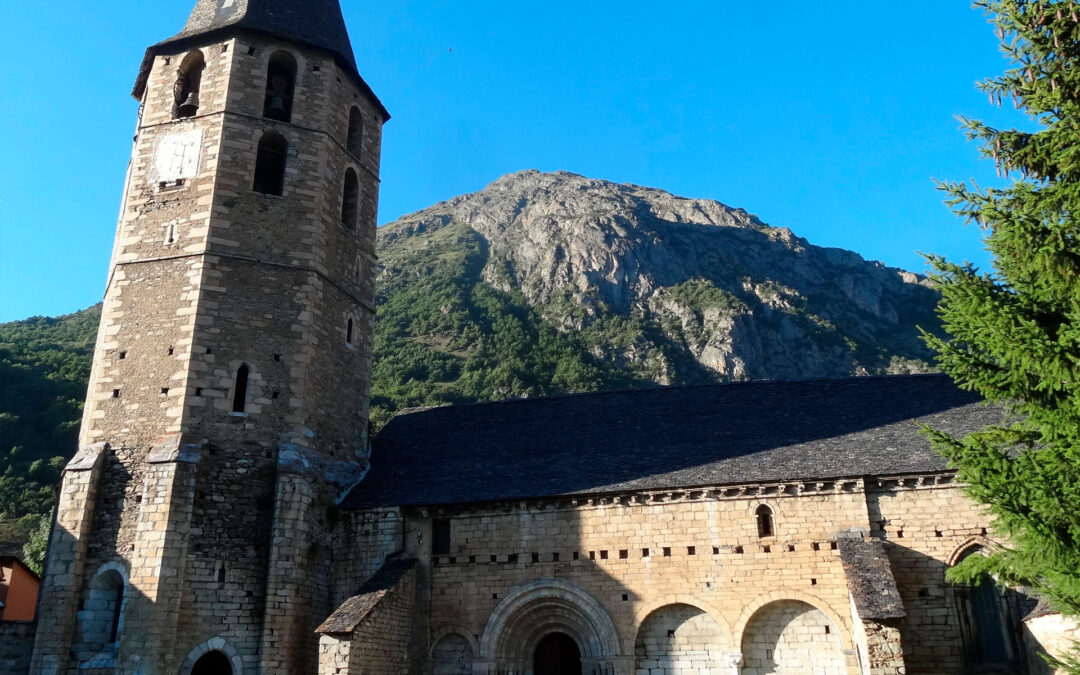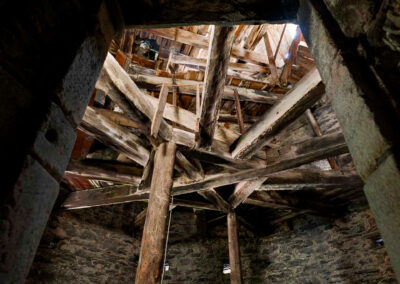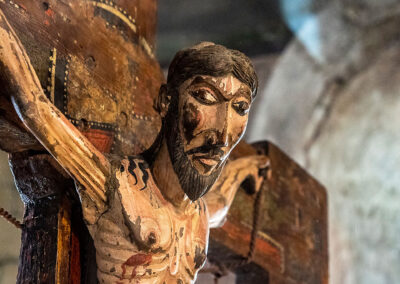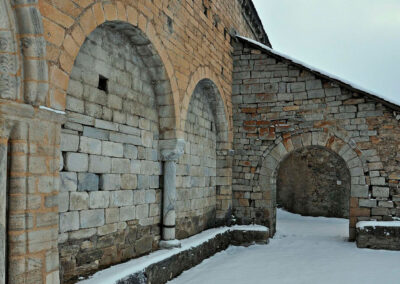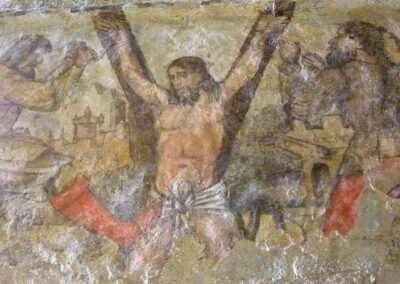Sant Andreu de Salardú
Sant Andreu de Salardú
The church of San Andrés de Salardú (in Occitan glèisa de Sant Andrieu de Salardú) is in the transitional Romanesque style of the 12th and 13th centuries, located in the upper part of the municipality of Alto Aran in the Catalan region of the Aran Valley.
It houses the carving of the Christ of Salardú, one of the most representative works of Aranese Romanesque.
The side doorway has five decorated archivolts resting on columns and capitals. In the same wall you can see two arcades. The bell tower is octagonal and added from the 15th century, it is made up of two floors, attached to the southwest corner, it is very slender and is provided with loopholes that give it a defensive character. The head is made up of three semicircular apses with corbels and crowned by a bell tower with a belfry.
Inside, the plan is basilica, rectangular, with three naves, the central one covered with a pointed vault, supported by pillars and the lateral ones, by reinforced quarter-circle vaults with toral arches.
The famous Christ of Salardú, a Romanesque carving from the 12th century, presides over the main altar, with recently restored fresco paintings. It is the work of the same author of the Christ of Mitgarán.
Once we enter the interior, we are surprised by an elegant Gothic architectural structure supported on pillars with a square base and ribbed vaults. Moving towards the presbyterial area, we come to one of the most extensive and best preserved wall paintings in the Val d’Aran. These are works from the 17th century where various personalities and biblical examples are represented.
The culmination of the visit to Sant Andrèu de Salardú takes place when approaching the central apse, where the majesty carving of the Christ of Salardú is erected, a masterpiece of d’Erill la Vall workshop, to which the execution of the Christ of Mijaran is also attributed. The carving from the 12th century shows the image of a suffering Christ, with the triangular section of the legs and the characteristic features of Romanesque religious iconology.

